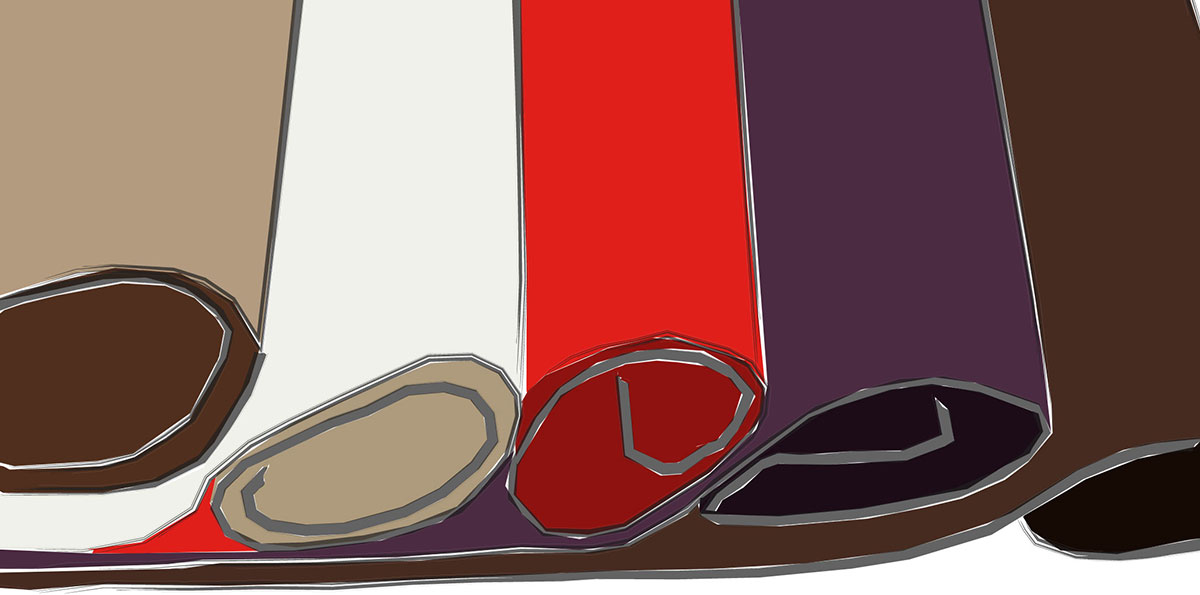Eurway Education: Furniture Upholstery Types

Don't be intimidated by all the technical names of upholstry types! We're here to help clarify what types of upholstery are with our handy guide below.
Bicast Leather
Also spelled as Bycast Leather. A genuine split-hide leather manufactured with a protective layer of polyurethane for strength, durability and modern finish. Although bicast leather is often less expensive to produce than top grain leather, is easier to clean and maintain and generally has a more uniform grain pattern.
Bonded Leather
Bonded leather, or regenerated/reconstituted leather, is a term used for partially synthetic leather upholstery. It is mechanically processed to give the appearance of leather, but at reduced cost compared to natural leather. There are different types of bonded leather; the type being used on upholstered furniture today is a plastic material (generally polyurethane or vinyl), backed with fabric and then a layer of latex or other material mixed with a small percentage of leather fibers in the product's backing material. The surface is typically stamped to give it a leather-like texture.
Eco Leather
A term for faux leather, or leatherette - an artificial leather created from ecologically responsible methods.
Leatherette
A form of artificial leather, usually made by covering fabric with a soft PVC layer that has an artificial grain. Although leatherette is not as porous as leather, it requires little maintenance and is highly resistant to fading and cracking. It is usually easy to clean.
LeatherSoft
Leather with polyurethane for added softness and durability. Tends to have a shorter life span than 100% genuine leather.
Linen
Textile made from fibers of the flax plant. Very absorbent and porous, lighter than cotton fabric. As a result, it stains easily. A lot of upholstery is Linen-like fabric - which is cotton + artificial fibers woven to the same appearance as linen. This is more durable and easier to maintain, but not genuine linen.
Microfiber
A synthetic fabric specifically designed for softness and durability, typically made from polyester fibers. Microfiber is designed to repel liquids and resist staining, which makes it second only to leather in terms of overall durability of upholstered fabrics.
PU Leather (Polyurethane Faux Leather)
Usually a term for split leather with an added layer of embossed polyurethane which makes for a soft and easy to clean faux leather product - see Bicast Leather above. It also is used to describe a fully synthetic faux leather, in which polyester is used instead of split leather. Usually softer and more authentic feeling than PVC, but sometimes slightly easier to damage or stain.
PPM (Polyurethane-Polyester Microfiber)
A new upholstery material that has many advanced features including breathability, super durability, easy cleaning and maintenance. It is suitable for all climates and with its high durability, it emulates the finest leathers. PPMs 1.5 mm thickness gives reliable strength that also resists tearing, sagging, crocking and shrinking. PPM is recommended for high traffic commercial environments.
PVC (Polyvinyl Chloride)
One of the most widely used plastics in the world - it is in everything from clothing and piping to furniture. PVC is fully synthetic and is made by altering vinyl chemically, then adding pores and other augmentations to make it more usable. Compared to Polyurethane, which often contains altered natural components, PVC is a little less soft and a little more durable. It is very easy to clean and stain resistant.
Regenerated Leather
Made in a process similar to that of paper, Regenerated Leather has a completely smooth surface, is durable, easy to clean and is less expensive than genuine leather. Production includes compressing fibers of leather waste with other materials such as latex, synthetic compounds or natural gums. It is also sometimes called Bonded Leather.
Split Grain Leather
Created from the layer of the hide just below the top grain. Split grain leather has an additional layer applied to the surface which is embossed with a leather grain. Split grain leather is known for its balance between durability and value. Since split grain leather is more abundant than top grain it can be produced more cost effectively. Additionally, the manufacturing process minimizes many of the natural imperfections in the hide itself, while sustaining the natural strength of the fabric.
Top Grain Leather
Refers to the upper section of a hide closest the epidermis. Full grain leathers have not been sanded or buffed, so they still retain the natural variances and imperfections present in all leather. Correct grain leathers, conversely, have been sanded or buffed in an effort to minimize the natural imperfections in the hide.




